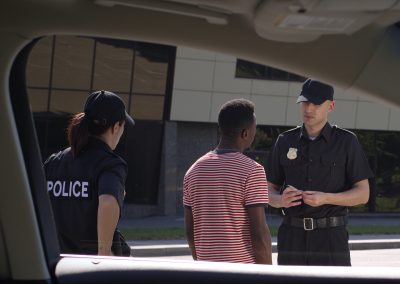This recent Calibre Press article is really harshing our mellow. Capt. Padilla of course has earned his experience in Denver and we in no way want to denigrate his service. He brings up some excellent points.
But we also think he’s that the gloom surrounding the legalization of marijuana in many law enforcement circles is, well, half-baked. This election day, California, Maine, Massachusetts and Nevada approved recreational marijuana; Florida, North Dakota and Arkansas approved medical marijuana. It’s clear that Colorado and Washington sparked a national legalization movement.
Now What?
As co-authors of the recent book, In Context, we understand perhaps more than most the importance of contextual data analysis, and the pitfalls of raw data quotation. Opponents of legalization see rising enforcement actions on intoxicated drivers, citations issued for public consumption, and increases in other crimes. It is important to take this data in total context.
Some context in Colorado is necessary. The housing market there is booming. Americans are moving to Colorado in droves. Housing prices increased by 17% in Denver from 2010 to 2014 as a result of “high” demand. Denver experienced 10.6% population growth during that time.
Of course, rapid growth can result in urbanization, increases in crime, and economic division. Opponents of legalization charge that marijuana legalization makes roads less safe, citing “drugged-drivers.” The support for this argument is often derived from enforcement data, not public safety data.
Perhaps some of the tax dollars levied by Colorado and Washington on marijuana sales had something to do with the extra enforcement? Capt. Padilla quotes a newspaper that refers to the $135 million in taxes from Colorado sales of recreational marijuana as, “A drop in the bucket.”
Um … That’s about a third of Denver PD’s operating budget. It’s enough to pay for the entire Denver County Sheriff’s office. An awfully big ‘drop.’
And Colorado roads are actually safer. Fatalities have trended sharply downward for the first three years after legalization, then spiked in 2015. State highway authorities attributed the 12% spike in fatal wrecks in 2015 to a dramatic increase in miles driven (the price of gas plummeted); a 10% increase in motorcycle crashes; the fact that nearly half of all victims in passenger vehicle fatalities were not restrained; and distracted driving: texting, tweeting, etc. The state did not mention marijuana.
We suspect many Colorado residents have opted to use marijuana instead of alcohol. We know that “drivers under the influence of marijuana retain insight in their performance,” and “THC’s adverse effects on driving performance appear relatively small.” Is that from a study by some hippie shop, like NORML? No: It’s from the National Highway Traffic Safety Administration.
This argument can become circular. Fatality decreases might be a result of more enforcement. But, on the whole, roads are safer now that marijuana is legal.
One of us had a father who died of pancreatic and lung cancer. As he lay dying, he was for days nauseated because of the medications he was on. As soon as he inhaled some marijuana, he smiled at his family, said “It’s gone!” He then asked for some soup. The medical benefits of marijuana are real, they are proved, and only a fool would imply that alcohol, prescription opioids, or even Tylenol are safer. There has never been a death from marijuana overdose.
Marijuana has the ability to free from their pain and misery patients addicted to prescribed pharmaceuticals. Yet marijuana users are depicted in DARE pamphlets to be akin to abusers of hard drugs like heroin, cocaine, or prescription narcotics. As a 10-year veteran police officer, Ben has seen people at their worst. Drugs like methamphetamine, heroin, oxycodone, fentanyl, and hydrocodone have the distinct ability to drag happy and healthy human beings into the darkest and most depraved existence one can imagine. These prescription drugs are addictive when taken as directed. Marijuana is far less addictive, causes far less impairment, and causes far less damage to the human body.
DARE treats marijuana as merely a stepping stone to heroin, a gateway theory that has never been proved. And studies have shown literally no measurable difference in drug use between kids who have and have not been through DARE training. Police have spent 50 years fighting marijuana, and here’s the thing: It’s hard to admit we were wrong.
In Sum
Colorado and Washington State have proved that as a recreational drug, marijuana is safe. As a prescription medicine, it can actually do some very good things for our society. Are there downsides? Anything can be taken to unhealthy extremes—as the prohibition on marijuana makes clear.










0 Comments